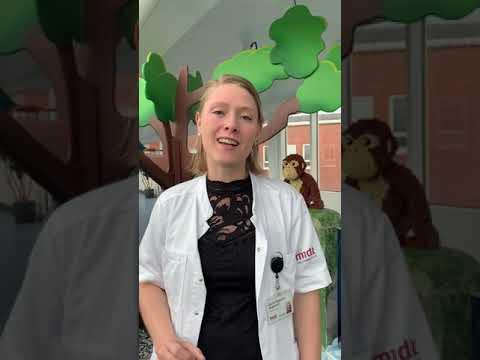Cecilie Siggaard Jørgensen
Bedwetting has major consequences for children’s quality of life
Cecilie Siggaard Jørgensen, doctor and PhD student, is receiving a Lundbeck Foundation 2022 Talent Prize for her research on incontinence in children and adolescents.
The number might seem extreme, but nonetheless, it’s realistic.
In Denmark, 15% of children suffer from bedwetting on starting school, and 5% are still struggling with the problem to varying degrees as school-leavers.
‘Nocturnal enuresis, commonly known as bedwetting or nighttime incontinence, is the most prevalent chronic disorder in children and adolescents,’ says Siggaard Jørgensen.
A medical doctor and PhD student at Aarhus University and Aarhus University Hospital, she is one of five young scientists recently awarded a Lundbeck Foundation 2022 Talent Prize.
Unhelpful preconceptions about childhood bedwetting abound, explains Siggaard Jørgensen, who is attached to the Centre for Paediatric Incontinence at Aarhus University Hospital:
‘For example, it’s often assumed that sufferers are just plain lazy or badly brought up, missing the actual problem completely. But the assumption couldn’t be more wrong because nocturnal enuresis is mainly due to a physiological dysfunction, and it’s a highly heritable condition.’
It is important to raise awareness of this, as bedwetting is associated with so much shame and guilt that children and adolescents tend to keep the problem to themselves. Siggaard Jørgensen explains:
‘If someone suffers from nocturnal enuresis, it’s liable to affect their self-esteem, and it’s not usually something young people are likely to share with their peers. Bedwetting also makes it awkward to take part in social activities involving overnight stays. And boarding school or dating is not exactly a breeze if you’re still wearing incontinence pads at night.’
The two so-called first-line treatments offered to children and adolescents affected by nocturnal enuresis (NE) are either medication or a bedwetting alarm placed inside their nightwear. The medication has the same effect as a naturally occurring hormone whose job, among other things, is to reduce urine production at night. The alarm is triggered the instant bedwetting is detected, and the effect can presumably be attributed to the principle of conditioned learning – “Pavlov’s dogs” being the most famous example of this.
Two thirds of all children and adolescents affected by NE benefit from one of the two treatments, but more detailed knowledge is needed to identify when the alarm or medication would be the best course.
Consequently, researchers at the Centre for Paediatric Incontinence in collaboration with international colleagues have initiated a large-scale research project to address the issue. A total of 350 children aged 6 to 14 from Denmark, Poland and China are now being monitored closely. Half of the children, all of whom are affected by NE, will randomly be offered either medication or a bedwetting alarm. Based on a detailed description of each child’s “bedwetting profile”, the other half of the cohort will instead be assigned to either one or the other treatment. Throughout the study, all the children will be closely monitored by doctors. Siggaard Jørgensen and her PhD supervisor, Professor Søren Rittig, are jointly responsible for the project.
Through her work at the Centre for Paediatric Incontinence, Siggaard Jørgensen is also involved in a project to investigate genetic factors underlying NE.
‘By investigating the genetics, we hope to be able to improve our clinical understanding of nocturnal enuresis, and urinary incontinence generally, in children and adolescents. To that end, we’re in the process of establishing an international biobank of blood samples from children affected by these problems. The biobank will be housed at Aarhus University Hospital and will hold samples from children in Denmark, Japan, China, the US, Poland, Belgium, Italy and Germany,’ she explains.
Last year, in an article published in Child and Adolescent Health, the researchers from the Centre for Paediatric Incontinence identified a number of genes believed to be implicated in NE. Siggaard Jørgensen was the principal author of this article, and with the aid of the international biobank now under development, she will be continuing the genetic studies.
‘One hope is that by gaining a better understanding of the genetics behind nocturnal enuresis and urinary incontinence, we’ll ultimately be able to come up with ideas for personalised treatment for each child,’ says Siggaard Jørgensen.
Studies of the genetics underlying NE may also generate ideas about how to treat the disorder using medication that is already approved and available on the market but for treatment of completely different medical conditions.
‘We’re about to launch a study with that very aim here at Aarhus University Hospital,’ says Siggaard Jørgensen.
Cecilie Siggard about her research and the Talent Prize (Danish):

